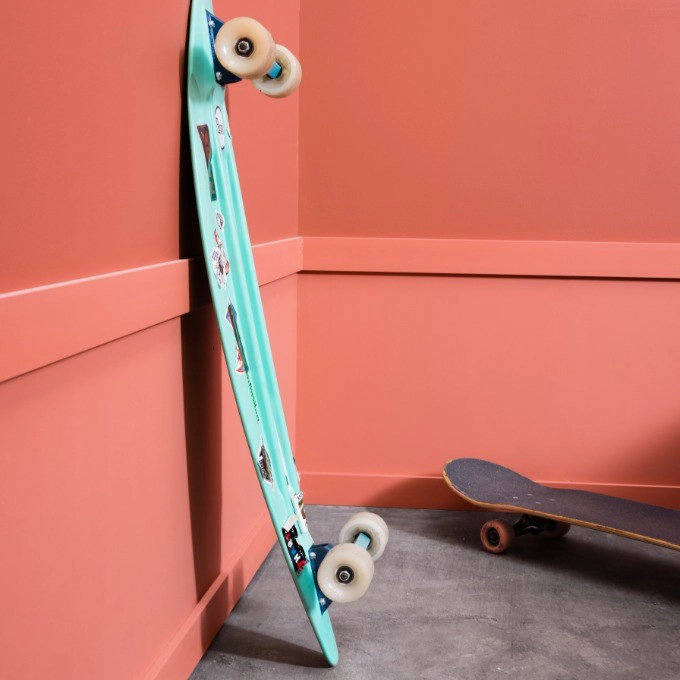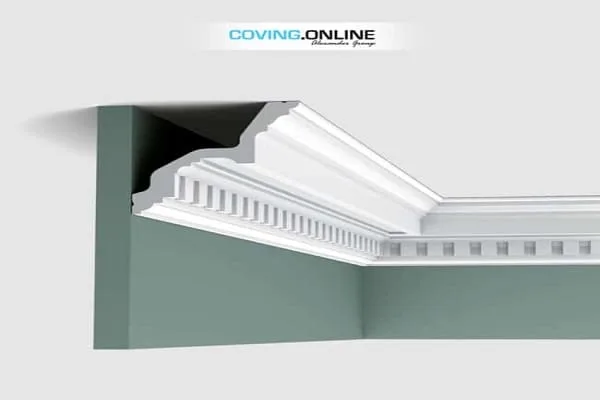blog
Transform Your Space with These Coving Design Ideas
“Unlock the transformative power of coving and elevate your living space. Our comprehensive guide offers expert insights and practical tips for seamlessly integrating coving design ideas.”
What is Coving? Adding a Touch of Timeless Elegance
Coving, an ornamental moulding with centuries of history, is a staple in interior design. This decorative element not only adds sophistication but also serves practical purposes such as concealing imperfections and enhancing aesthetic appeal.
History and Origins of Coving in the UK
Tracing its roots back to ancient Greece and Rome, coving initially served as a structural element. It later evolved into a decorative feature of European architecture during the Renaissance.
Major Types of Coving Materials
Plaster
Plaster coving, known for its durability, is crafted from gypsum, lime, and other materials, allowing for intricate designs.
Polystyrene
Polystyrene coving is a lightweight, cost-effective option popular among DIY enthusiasts due to its wide range of designs and ease of installation.
Wood
Wooden coving, with its classic charm and natural warmth, can be stained or painted to match any interior style.
How to Select the Perfect Coving for Your Unique Space
When selecting coving, consider the room’s style and architectural features. Ornate coving may suit a traditional living room in London, while sleek designs are ideal for modern spaces.
Considerations for Different Room Styles
Coving styles should complement the room. For instance, bedrooms may benefit from soft curves, while formal dining rooms might suit intricate patterns.
Matching Coving with Architectural Features
Ensure coving harmonizes with existing architectural features. Larger, elaborate coving can create a stunning visual impact in homes with high ceilings.
Ultimate Guide to Installing Coving
Tools and Materials Needed
Gather essential tools like a mitre saw, adhesive, measuring tape, and a spirit level, along with your chosen coving material.
Preparation of the Surface
Ensure the surface is clean, dry, and free from debris for a secure bond.
Applying Adhesive
Use a high-quality adhesive, evenly distributed on the back of the coving.
Fixing the Coving
Position the coving carefully, ensuring proper alignment, and use temporary supports until the adhesive sets.
Coving Design: Ideas and Inspirations
Coving offers a multitude of design options to cater to all tastes and styles.
Classic Designs
Opt for classical designs featuring intricate patterns for a timeless look.
Contemporary Styles
Embrace minimalist coving for a modern aesthetic that complements contemporary interiors.
Customized Coving
Personalize your space with bespoke designs that reflect your unique style.
Maintaining and Cleaning Coving: General Care Tips
Regular dusting or light cleaning with a damp cloth should suffice. Consult a professional for stain or damage treatment to avoid further issues.
Architectural Styles and Coving
Victorian Homes
Ornate coving complements the grandeur of Victorian architecture, adding a touch of opulence.
Modern Interiors
Sleek, streamlined coving aligns with the clean lines and minimalist aesthetic of modern interiors.
Minimalist Spaces
Subtle coving can add elegance without overwhelming minimalist spaces.
Coving in Commercial Spaces
Restaurants and Cafes
Coving can enhance the dining experience by creating an inviting atmosphere.
Offices and Workspaces
Coving adds sophistication in professional settings, fostering productivity and creativity.
Retail Stores
Coving can draw attention to merchandise displays, boosting the visual appeal of retail spaces.
DIY vs. Professional Installation: Pros and Cons
While DIY installation is possible, professional installation guarantees a flawless finish and saves time.
Current Trends in Coving
Sleek, minimalist designs and eco-friendly materials are popular trends in coving, along with unique patterns and designs as a form of artistic expression.
Cost Considerations for Coving Installation
Polystyrene coving is a budget-friendly option, while bespoke plaster coving crafted by skilled artisans is a luxurious investment.
Benefits of Coving
Coving transforms any space into an elegant haven, adding value to your property and enhancing its aesthetic appeal. The upward curve of coving can create illusions of height and space, especially beneficial in smaller areas. Additionally, coving can provide acoustic benefits and requires minimal maintenance.
What We Offer at Coving UK
At Coving Online, we offer a range of options to suit every taste and budget, ensuring your home reflects your unique style. Explore our website for more information on our aesthetic coving designs.
Frequently Asked Questions About Coving
Q. Is coving suitable for all room sizes?
Yes, coving can be installed in rooms of all sizes. It can enhance the aesthetic of small rooms by creating an illusion of space.
Q. Can the coving be painted to match my room’s colour scheme?
Coving can be painted to seamlessly blend with your chosen colour palette, allowing for complete customization.
Q. Is coving installation a complex process?
Not at all. Coving installation can be a straightforward DIY project with the right tools and guidance.
Q. What material is best for covering in high-moisture areas like bathrooms?
Polyurethane coving is an excellent choice for moisture-prone areas due to its resistance to humidity and durability.
Q. How long does coving typically last?
Coving can last decades when properly installed and maintained, making it a long-term investment in your home’s aesthetics and value.
Q. Can I install coving myself or hire a professional?
It depends on the complexity of the project. While DIY installation is possible, larger or more intricate designs may require professional expertise.
Q. What is the best material for coving in a minimalist interior?
For a clean, modern look, consider polystyrene coving. It’s lightweight, easy to install and complements minimalist aesthetics.
Q. How do I clean and maintain plaster coving?
To clean the object, gently dust it off with a soft cloth or wipe it clean using a mild detergent solution. Avoid abrasive cleaners to prevent damage.
Q. Can coving be used in commercial spaces for sound insulation?
Coving can contribute to sound insulation, making it a practical addition to busy environments like offices and restaurants.
Q. What are some popular custom-coving design options?
Custom coving can range from intricate patterns to unique, personalized motifs. Talented artisans can transform your ideas into reality.


